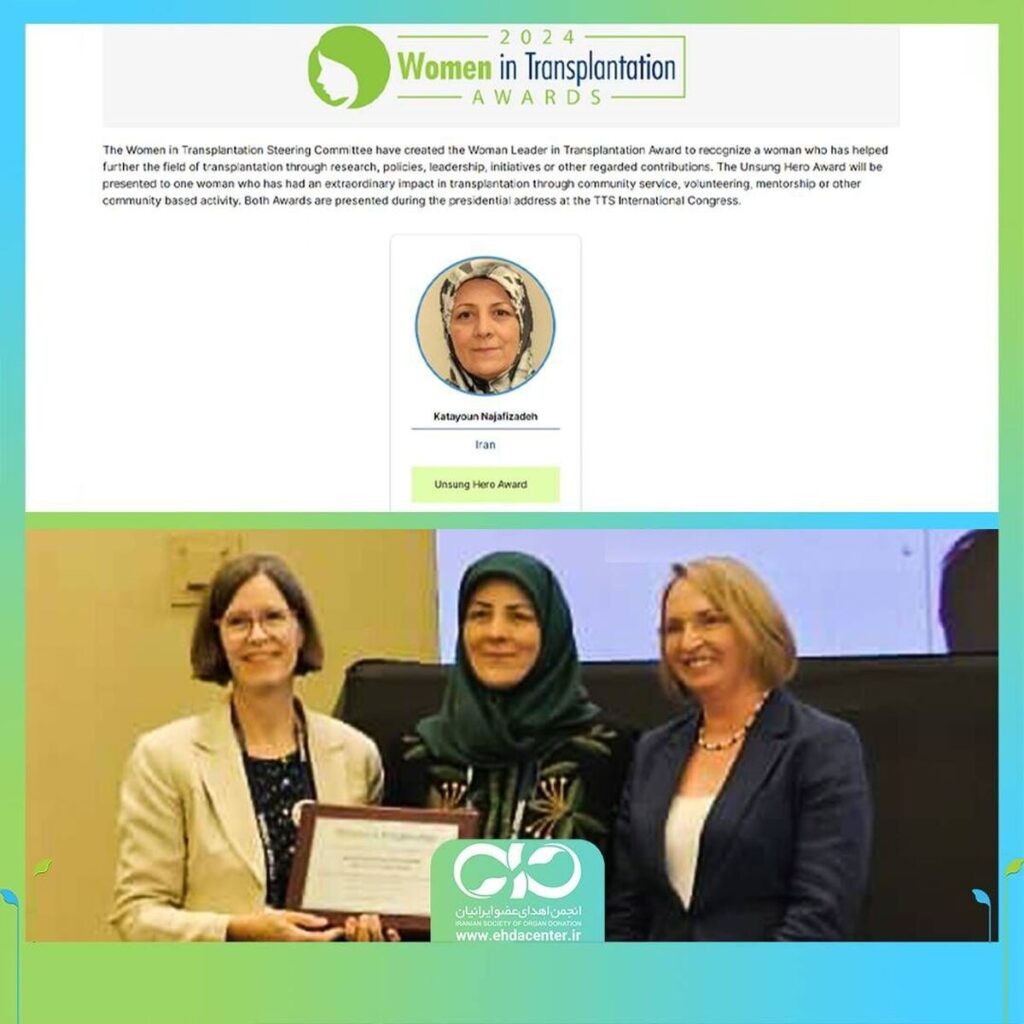Dr. Katayoun Najafizadeh, a pioneering figure in organ transplantation, has revolutionized the field in Iran. From establishing lung transplantation to advocating for organ donation and supporting donor families, her impact is far-reaching.
This report is about a highly influential woman who has significantly advanced organ donation in Iran and has been recognized as the world’s top woman at the 30th International Transplantation Congress.
Since 1999, when lung transplantation was initiated in the country, she has worked tirelessly to steer Iran towards a new direction, preventing the burial of healthy organs from brain-dead patients and enabling them to give life to others.
Thanks to the efforts of this woman and her colleagues, the culture of organ donation has gradually taken root in the country. Along with other activists in this field, she has helped Iran achieve the top position in Asia for organ donation.
“Katayoun Najafizadeh” is a name that has consistently shone brightly in the field of organ donation over the past 25 years. She continues to strive to bring Iran to the ideal level of organ donation.
This Iranian woman’s achievements are not limited to her valuable services in her own country. As a member of the board of directors of the World Organ Donation Association and the head of the Global Donation Enhancement Working Group, she has taken significant steps to promote organ donation culture in various countries.
In this interview, we present a selection of the activities of Dr. Najafizadeh, a lung disease specialist and managing director of the Iranian Organ Donation Association, to demonstrate why she is recognized as the world’s leading woman in organ donation activities and to show the current status of organ donation.
A Trailblazing Figure in Lung Transplantation
After returning to Iran from Canada, she decided to establish lung transplantation in the country. By founding a transplant clinic at Masih Daneshvari Hospital, she initiated this endeavor, and patients gradually joined the waiting list. However, despite the increasing number of patients on this list, the number of reported brain deaths was so low that many of the waiting patients lost their lives. In fact, only six transplants were performed from 1999 to 2004. This disappointing situation prompted Dr. Najafizadeh to seek a solution.
Overcoming Challenges
She says, “When we saw that our patients didn’t have a high chance of survival, in 2004, we took action ourselves and established the organ donation department at Shahid Beheshti University of Medical Sciences to manage all stages of the brain death and organ donation process.”
“The responsibility of identifying brain death, caring for the patient, obtaining family consent, completing legal procedures, and ultimately reaching the donation stage was entirely up to us, and we spared no effort. But after a while, we realized that people didn’t have enough knowledge about brain death, and we had to focus heavily on cultural awareness to achieve our goals.”
“This work was pursued seriously, and thanks to our colleagues, especially Dr. Ghabady, we worked on the process of obtaining consent from the families of brain-dead individuals, which is a combination of psychology, sociology, and communication science.”
“By 2012, we had made significant progress and were able to achieve the world’s first rank in obtaining consent from families with a rate of 96.3%.”
Dr. Najafizadeh continues: “We understood how to scientifically inform a family who had lost a loved one so that they would not only not be offended but also be grateful for the opportunity that their loved one’s body parts would not be buried and could save the lives of other people.”
From Cultural Shift to Supporting Survivors
Since 2012, organ donation has expanded nationwide, and two years later, recognizing the need for more cultural awareness and support, the Iranian Organ Donation Association was established.
Led by Dr. Najafizadeh, this association is working to save more lives through various initiatives.

Currently, out of 5,000 to 8,000 brain deaths annually, only the organs of 1,000 individuals are donated. This statistic needs to be improved through cultural awareness campaigns and by learning from other countries.
Dr. Najafizadeh explains, “In addition to promoting awareness, supporting donor families is one of the most important activities that the Iranian Organ Donation Association has always prioritized. In many cases, individuals who experience brain death come from disadvantaged socioeconomic backgrounds and do not use safety equipment.”
“Therefore, supporting their families must be a focus. In this regard, we have addressed issues such as job creation, financial support for starting businesses, providing supplementary insurance, and addressing emotional needs (grief counseling, recreational outings, etc.) and have collaborated with other associations.”
She adds: “For example, if we see that a woman is interested in sewing, we have provided everything from training to tools and creating a market for her products. Or for another person, we have provided a two-story house so they can live on one floor and start a grocery store on the other.”
“Our goal with these supports is to teach these individuals how to fish, rather than giving them a fish, so that they can stand on their own feet without relying on others and experience less suffering from the loss of a family head.”
From: farsnews


